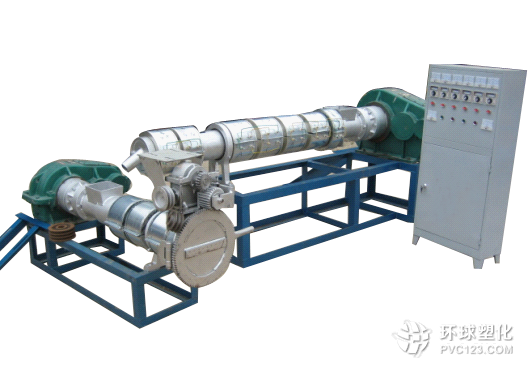Waste plastics are “retrofitted†by plastic pelletizers
Plastic products provide a lot of convenience for our production and life. This is the good side. On the other hand, it causes one of the biggest pollution sources in our life. It will not be naturally degraded, and the plastic pellet machine is well solved. This pollution has realized the recycling of waste plastics.
How does the waste plastics renew in the plastic pellet machine? Let's take a closer look:
After the plastic is added to the hopper, the hopper falls smoothly onto the screw and is bitten by the screw thread. As the screw rotates, the thread is forced to advance toward the head to form a mechanical conveying process. When the plastic is running from the feeding port to the machine head, the thread depth of the screw is gradually reduced, and due to the resistance of the filter screen, the manifold and the head, a high pressure is formed during the plasticizing process, and the material is pressed very much. Densification improves its conduction heat and helps the plastic melt quickly. At the same time, the gradually increasing pressure causes the gas originally present between the pellets to be discharged from the vent hole.

While the pressure is rising, the plastic is heated on the one hand by the outside. On the other hand, during the movement of compression, shearing and agitation, the plastic itself generates a large amount of heat due to internal friction. Under the combined action of external force and internal force, the plastic The temperature gradually increases, and its physical state also undergoes a change in the glass state, a high elastic state, and a viscous flow state.
Generally speaking, in the feeding, the glass state is mainly in the middle portion of the compression section where the screw thread is gradually reduced, the material is mainly in a high elastic state, and gradually melts, and the material is in a viscous state at the rear and the squashing section of the compression section. This is that the plastic has been completely plasticized, and the plasticized plastic is pressed, quantitatively and uniformly continuously extruded from the machine head by screw inference.
Pentaerythrityl Tetrastearate,Cas 115-83-3,Pentaerythrityl Tetrastearate Cas 115-83-3,Pentaerythrityl Tetrastearate 115-83-3
Jiangxi Zhilian Plastics & Chemicals Technology Co., Ltd , https://www.zhilian163.com
